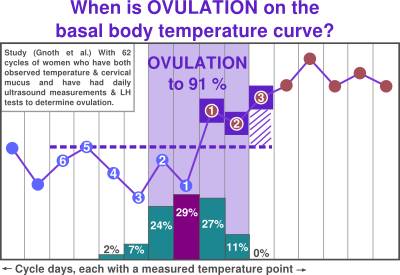 What does it mean when you observe the Spinnable Cervical Mucus? Was your Ovulation already or yet to come? Find it here in the Article.
What does it mean when you observe the Spinnable Cervical Mucus? Was your Ovulation already or yet to come? Find it here in the Article.
How does the Spinnable Cervical Mucus looks like?
If you notice your cervical mucus, you can then take a closer look and do the Stretchability Test. To do this, simply take your cervical mucus between your thumb and forefinger. Then, if you slowly spread your fingers, the cervical mucus may contract like a string or thread, or the thread, breaks quickly. So you can easily see if your cervical mucus is elastic or not. Some days and in some women, the cervical mucus looks as spinning as in the photo. This means you can stretch it very far and as a result the cervical mucus looks like a thread, because the more it dilates, the more you stretch your fingers. In some women, the thread (yarn) exceeds ten inches.
I’ve never seen the spinnable cervical mucus
Take a deep breath first. The cervical mucus is very individual. Some women have never really seen this spinnable or stretchy cervical mucus. This is completely correct and normal. Your body is perfect as it is. You may have never seen the spinnable cervical mucus due to different causes, such as dietary influence, medication or stress. Even age may affect cervical mucus, so spinnable mucus is generally less common at menopause in the mid-40s than in the mid-20s. However, you shouldn’t over interpret the quality of your cervical mucus. After all, if the sperm remains fertile in the cloudy and undilated cervical mucus and awaits ovulation or do so in the spinnable cervical mucus. Sperm remains normally fertile in the woman’s body between 3 to 5 days in the cervical mucus and fertilizes the ovule in the fallopian tube shortly after ovulation. Therefore, the general rule is as follows:
You can get pregnant as soon as you observe your cervical mucus. Whether your cervical mucus is spinning or cloudy, etc. it doesn’t matter.
However, often around ovulation, many women observe a high level of water in the cervical mucus, which then leads to a spinnable and distensible cervical mucus.
Can one improve the cervical mucus?
First of all, at this point it’s best to accept your cervical mucus as it is. Working with the pharmaceutical industry’s miracle drugs on cervical mucus is usually not a good idea, because as a fertility expert, I have gained great respect for natural cycle and fertility. For example, a woman with PCO became pregnant despite 100 days of cycles in the first attempt with the Symptothermal Method without medication. Before Symptothermal Method, she tried unsuccessfully for several years. Before you do anything, you should do a cycle diagnosis, otherwise you wouldn’t know what is lacking in the cycle. In the worst case, unfortunately, I feel it again and again, women are destroying their natural cycle. They take the means (funds) to help themselves without knowing what is lacking and it’s very dangerous.
There is nothing wrong for a woman to support and improve her cervical mucus naturally without medication. Here, you can increase the water content in the cervical mucus, for example, you drink more water. At least 2 litres per day is recommended. But there are other ways to improve her cervical mucus. I have revealed more information on the details in the article “Improving Cervical Mucus”.
Spinnable cervical mucus after ovulation-ovulation over?
The first thing that comes in mind is whether the woman asking this question really knows when she will ovulate. Unfortunately, ovulation calculators and ovulation tests are not reliable enough to limit ovulation. Similarly, a woman who observes only her cervical mucus in the cycle can’t get a precise answer to this question.
Finally, cervical mucus alone isn’t a sufficient indicator to determine whether or not you have ovulation. For this reason, you can’t infer that ovulation has occurred because you’ve seen spinnable mucus once or several times during the cycle. Therefore, it’s impossible to evaluate with only cervical mucus if the spinnable mucus was observed before or after ovulation.
Thus, it can’t be seen from a cycle with several mucus phases with spinnable mucus, whether ovulation is over.
In the Ovulation phase, there may be several spinnable mucus phases. This is particularly the case with PCO syndrome, endometriosis, postpartum pills and breastfeeding. Cervical mucus usually changes much before ovulation and is therefore mainly used to limit the appearance of fertile days in the cycle.
Ovulation can only be clearly determined by measuring the Basal Temperature in combination with the Cervical Mucus.
Shortly after ovulation, basal temperature, which you can best measure each day with an appropriate Symptothermal Method thermometer, usually increases. With the measured basal temperature curve in combination with the cervical Mucus, it’s possible to clearly determine when and if ovulation occurred in the cycle (see graph).
In the event that you’ve documented the spinnable cervical mucus, she can now clearly tell whether she has observed this spinnable cervical mucus BEFORE or AFTER ovulation (temperature rise).
Before ovulation or rise in temperature, the spinnable cervical mucus usually forms on the mucus. This may also be the case several times during different days of the cycle and is very often observed after the cessation of hormonal contraception due to artificial hormones. Spinnable cervical mucus can occur even after rises in temperature or after ovulation. However, this is usually the case shortly before the onset of the new menstruation, as the body releases the excess mucus from the cervix before menstruation. This cleaning process has nothing to do with ovulation and is completely natural. In addition to the Basal Temperature, the breast symptom is an interesting sign of the end of ovulation. This can give you extra security. If you want to immediately start measuring the temperature, we recommend our Get Pregnant Starter Set, with which many women have naturally got pregnant.
Spinnable cervical mucus-How long for fertility?
The fertile days in the cycle can only be clearly determined by self-observation using temperature and cervical mucus. It’s not enough to observe only the cervical mucus or Spinnable cervical mucus if you want to get pregnant. Thus, an answer to the question “how long are you fertile after the sterilization of cervical mucus?” without measuring the Basal Temperature, impossible. In the worst case, you had sexual intercourse on days when there was spinal mucus just before menstruation. In this case, you had sex during the infertile period and you can’t get pregnant.
The problem is that a woman can also observe the spinnable cervical mucus several times during the fertile period and it’s even possible, as I made mention above, that spinnable cervical mucus is observed shortly after ovulation.
Therefore, we strongly recommend this: Measure your Basal Temperature and observe your cervical mucus. You can then use the Symptothermal Method to answer the question of how fertile are you? For this I have written an eBook “when I am fertile? “ in which you will find a step-by-step introduction to the Symptothermal Method with exercise cycles and solutions. Likewise, in the second chapter, you’ll get information about cycle diagnostics, which will help you enormously to determine any possible cycle specialization within you. In the third chapter, you will find 15 motivating testimonials of pregnant women via very difficult conditions.
Spinnable Cervical Mucus BEFORE Ovulation
Before ovulation, many women can sometimes even observe Spinnable mucus several days in a row. This is mainly due to increased levels of estrogen, the cervical mucus just before ovulation becomes more liquid or watery. Spinnable cervical mucus is in most cases a definite ovulation sign and therefore the optimal time to have sexual intercourse if you want to get pregnant. However, I have already made it clear that you may not know, from only the Spinnable cervical mucus, if ovulation is imminent. If you see Spinnable cervical mucus, it simply means that the cervical mucus, in which the sperm can remain fertile for three to five days, is present. However, we never know if ovulation will actually occur in 3 to 5 days. Only when we measured the temperature we can say: OK now, ovulation is over, here is the end of the fertile days of the current cycle. Especially in women who suffers a lot of stress, the PCOS, the shift work or Cycle chaos after pills, repeated cycle phases with Spinnable cervical mucus. In the case of PCOS, ovulation may take several weeks. For this reason, it’s always important to measure the basal temperature in order to clarify it.
Spinnable cervical mucus before menstruation
Yes, it’s possible to observe Spinnable mucus just before Menstruation. As the cervix opens a little before menstruation, at this stage of the cycle, the Spinnable cervical mucus, which was still stuck in the cervix can easily come out. This expelled cervical mucus may very spun or elastic again. However, this Spinnable cervical mucus has nothing to do with ovulation and is usually several days later. Thus, the Spinnable cervical mucus before menstruation can generally not be used for getting pregnant.
Recognizing ovulation using the cervical mucus table
Cervical mucus is usually observed during the cycle after feeling, feeling and appearance. Then, the respective quality of the cervical mucus is determined using a cervical mucus table with the columns feeling and seen. Thus, for example, results from the combination felt moist and nothing seen, category f. Likewise, the cervical mucus category S + can be derived from wet and spinnable cervical mucus. You can also find such a cervical mucus table in my eBook “when can I be fertile? “. Using this cervical mucus diagram, you can classify and evaluate your cervical mucus in quality levels (f | S | S + | …). Likewise, in the eBook, you’ll learn how to measure your temperature and fill it in the cycle sheet. Thanks to the history of cervical mucus and evaluated and documented basal temperature, you can easily limit your ovulation in the cycle sheet and determine the fertile days.
Spinnable cervical mucus and get pregnant?
The cervical mucus can’t tell you if you’re pregnant. Spinnable cervical mucus is not an indication in this regard. However, after the first 12 weeks of pregnancy, there is the so-called white flow which can also produce fillable liquid mucus. However, most women even undergo a pregnancy test to find out if they are pregnant. Women who measure their Basal Temperature during their cycle can clearly see on the temperature curve without pregnancy test that they are pregnant. How it works is explained in detail in the eBook.
Spinnable cervical mucus-My conclusion
The Spinnable cervical mucus is an ovulation sign. Thus, it’s already worth having sexual intercourse on days with Spinnable cervical mucus. However, it’s not a drama if a woman have never observed the Spinnable cervical mucus. After all, the sperm does not matter what the cervical mucus looks like, the main thing is that it’s present. Likewise, the Spinnable mucus can’t tell if ovulation is over or you’re pregnant. The Spinnable cervical mucus can be observed both during the fertile days before ovulation and the luteal phase. If you really want to know when you’re fertile, you need to measure the Basal Temperature and observe the cervical mucus. Of course, I got pregnant twice during the 1st Exercise Cycle, despite Hashimoto and luteal insufficiency. With the Symptothermal Method, 81% of women get pregnant within 6 months, compared to only 60% without Symptothermal Method. It’s therefore useful to determine your fertile days by evaluating the Basal Temperature and cervical mucus. In this respect, I wish you Spinnable cervical mucus and all the best on your way to the desired child.





